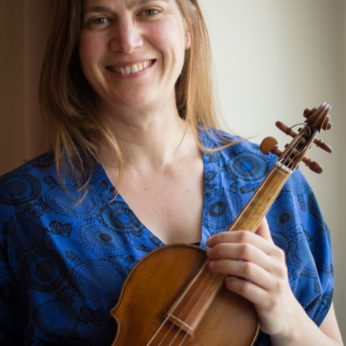Composer: Johann Heinrich Schmelzer (b. 1620 - d. 1680)
Performance date: 01/07/2015
Venue: St. Brendan’s Church
Composition Year: 1664
Duration: 00:16:32
Recording Engineer: Richard McCullough, RTÉ lyric fm
Instrumentation Category:Trio
Instrumentation Other: vn, lute, hpd
Artists:
Sophie Gent -
[violin]
David Miller -
[lute]
Jonathan Cohen -
[harpsichord]

These two Sonatas bookend this recital. When Schmelzer began
his career as a violinist in the Viennese inperial court, the Austrian musical
world was dominated by Italians. The Hofkapellmeister
had been an Italian for as long as
anyone could remember and Italian violinists were playing works by Marini,
Uccellini, Viviani and Pandolfi Mealli. By the end of his life, Schmelzer had
overturned this order; he himself had become the first non-Italian
Kapellmeister at the Viennese court and was considered to be one of the most famous, distinguished
violinists in the whole of Europe.
He was hugely influential in the development of violin
technique and instrumental music in 17th century Austria. There is no doubt
that he was influenced by the Italian composers who were responsible for
introducing solo violin repertoire to northern climes, such as Marini, Fontana
and Uccellini. Schmelzer in turn influenced the later German and Austrian
composersThere is much debate as to whether or not he was Biber’s teacher, the
case cannot be proved, attractive though the idea is. But it is timely to hear
them both in the same programme.
The six Sonatae unarum
fidium were most likely intended for the composer’s own use as a performer.
The description Sonatae unarum fidium, meaning
literally sonatas for one violin, is part of an elaborate and learned
dedication to Cardinal Carlo Caraffa that trades on the double meanings of Fidium, and should not be taken to mean
solo violin without continuo. Schmelzers hyberbolic dedication has been
wondefully described by the violinist, Andrew Manze, as a riot of resonance.
As with his successor, Heinrich Biber, another
violinist-composer, Schmelzer’s
genius lies in his ability to translate the art of improvisation into the
permanence of a sonata without losing the immediacy of the improviser. Most of
his sonatas rely strongly on the variation principle and consist of a number of
short sections in contrasting meters and tempos, but in the solo violin sonatas
these sections are extended to allow a greater display of his astounding
virtuosity. Both sonatas are through composed creating a uniquely rich sound
world, perhaps only matched by Biber’s wonderful set of eight solo sonatas.
Copyright © 2025 West Cork Music. All rights reserved.
Designed and developed by Matrix Internet